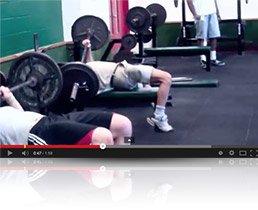
Ever catch one of those YouTube videos showing a guy in the gym secretly caught on camera using the most ridiculous form? Typically it's someone attempting to do simple bodybuilding exercises without a clue as to how to isolate the target muscle group: the barbell curl with a simultaneous pelvic thrust and low-back extension, the painful-looking bounce off the chest in the bench press, and the squat which descends an inch or two with way too many pounds on the bar. Yeah, there's a good laugh in all of those.
A month or two after that hilarious fail video, that guy with the bad form probably gave up on training—not for the first time, nor the last. That can seem like a blessing for those of us waiting in line behind him for equipment. But take a slightly larger perspective and you'll see that his errors were a symptom of something we're probably guilty of, as well.
Everyone, from green-gilled beginners to seasoned pros, makes mistakes. If that wasn't the case, then we'd all win the Olympia, the Olympics, and the BodySpace Spokesmodel Contest every year. Some are blunders from lack of knowledge; others are important signs that our training is growing and progressing.
Have you committed one of these nine sins that afflict beginning, intermediate, and advanced lifters? If you haven't yet, well, you probably will at some point. The sooner you see it, the sooner you can fix it!
Beginner Mistakes
With the right approach, beginning lifters regularly achieve the sort of dramatic gains that leave intermediate and advanced lifters 'miring. You deserve to make the most of this early period, and your success here is crucial to building your passion for training moving forward. The key is to keep these three classic miscues from stopping you before you get the chance to start.
Beginner mistake 1
Doing too much, too fast
A staunch commitment to building muscle is a good start, but you can get too much of a good thing. If your efforts to gain muscle size are so all-consuming that you spend more than about 60-90 minutes of training in the gym each day, especially if you're a beginner, your training can quickly turn counterproductive, leaving you discouraged, exhausted, and potentially injured.
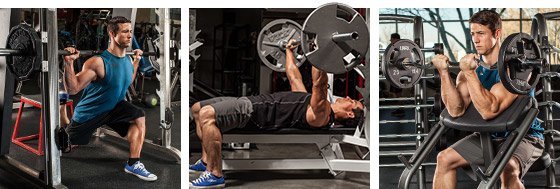
It doesn't seem fair, right? Your body starts producing exponentially greater amounts of the catabolic hormone cortisol as your workout approaches the hour mark. A certain amount of this is normal and beneficial, but too much, too often will eat away at your muscles and health, negating all the good work you've been doing. As you get more experienced, your capacity for hard work will definitely rise, but until then, it's important to stay within your limits.
Work hard for no more than 45-60 minutes total, and no more than 30 minutes for a given body part. You can't maintain the intensity of a hard training session when your fatigue levels skyrocket, and there's no benefit to trying. Remember, the muscle damage you inflict during training is the stimulus for growth, but the growth occurs during your recovery period.
Beginner mistake 2
Focusing on isolation exercises
While big arm and chest muscles might sit atop your wish list, your first year—that's right, year—of training should be devoted to building a foundation of strength and muscularity with classic movements like squats, deadlifts, presses, and rows. These compound exercises will help you build muscle all over your body, because they demand that many muscle groups work in coordination. For example, the bench press calls the front delts, pecs, and triceps into play. Standing moves like the squat and overhead press train the core to stabilize the torso.
In addition, you can lift far heavier weights when doing compound (also called multi-joint) exercises over single-joint moves such as leg extensions, flyes, or delt raises. In response, your body experiences a greater natural hormonal response—in the form of testosterone and growth hormone—from heavy compound moves versus lighter-weight isolation exercises. One other benefit: Compound lifts help you develop better symmetry and prevent the type of muscular imbalances which could lead to injury down the road.
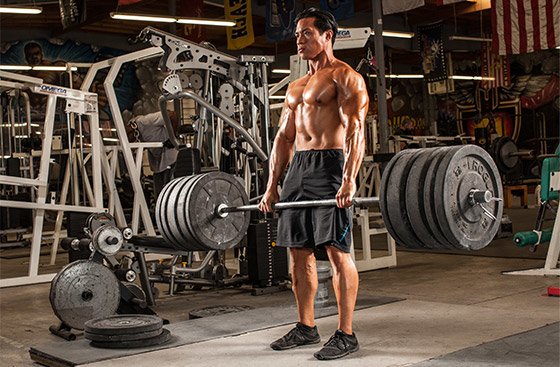
Beginner mistake 3
Blindly following someone else's routine
Pro bodybuilders don't come up with their routines accidentally. Through years of trial and error, they've discovered what moves work best for them. Their routines reflect a preference for some kinds of equipment over others—say, dumbbells over barbells if they have a pre-existing shoulder problem—and to target weak or lagging areas. In addition, the large volume of exercises, sets, reps in their plans reflects their highly advanced status, something a novice shouldn't try to duplicate.
On a more functional level, their training splits also reflect the amount of time they have available, their recuperative abilities, and nutritional support, all of which vary based on individual circumstance. To put it in concrete terms, you may want jump right into the Arnold Blueprint trainer, but with your current work schedule, budget, and abilities, LiveFit might be a better fit. A year from now, the opposite might be true.
That being said, you can still gain useful insight from top competitive bodybuilders. They have years of in-the-trenches experience and can provide insight into subtle techniques and ways of doing particular movements that are incredibly useful, even for beginners.
There's much to be learned from dissecting a pro's routine, but chances are good it's not one you want to repeat exactly. That goes for blindly copying the routines of other gym members as well.
Intermediate Mistakes
If the workout which gave you fantastic gains as a beginner doesn't challenge and push you anymore, congratulations! You are now an intermediate lifter. Look around your gym, and you'll see plenty of individuals who stall at this point, and who have, sadly, made no appreciable progress on their physique in months or years. That's the curse of being an intermediate: If you just do your same-old workout, you're bound to get the same-old results.
At this stage, your workout shouldn't be considered so sacred that it must be followed to the letter. It becomes a living and breathing instrument that can be tweaked and massaged to ensure that it keeps working for you rather than against you.
Intermediate mistake 1
Sticking with only one version of a movement
Knowing how to perform a given move with perfect form is critical, and it will help you build a solid base of muscularity. But once you get that base, it's important to explore the full range of subtle variations of classic movements. Learning—and practicing—all these variations will help you build thicker, denser muscle because you train the target muscle at slightly different angles. Over time, incorporating all the variations into your workout will build more strength, size, and balance.
The most obvious way to grow is by mastering barbell, dumbbell, cable, and machine moves. Some exercises can be done on every one of these implements; each provides a slightly different growth stimulus.
There are many other ways to introduce small degrees of change into a movement. Take the standing dumbbell lateral raise for your middle delts, for example:
- From a seated position to decrease momentum and increase difficulty
- One arm at a time while standing to increase the focus on each side
- On the cable to utilize constant tension and a range of angles
- On a machine to make it easier to work to failure
- Leaning away from a vertical post to increase the range of motion
With imagination, the options for exercise variations are limitless.
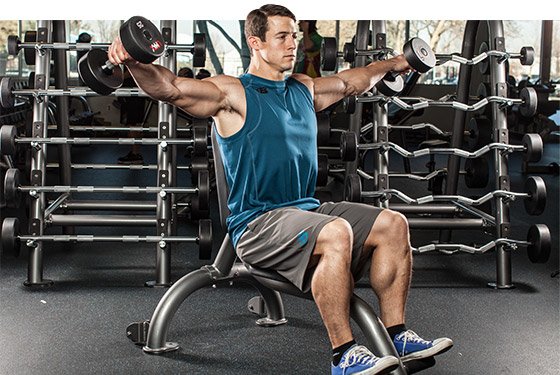
Intermediate mistake 2
Doing the same workout only slightly differently
Everybody has their favorite exercise. That's OK, and you should respect your preferences. But, if you're not getting results, you need to make changes. This could be exercise selection, but it could also be exercise order, sets, reps, weight, intensity technique, or even the overall makeup of your training.
Instituting these changes to your workout has the added benefit that it helps keep you mentally fresh as well. Don't bounce around willy-nilly, though. Give the changes you make some time to work before you ditch them for another fun-looking scheme.
Intermediate mistake 3
Getting too strict with rest periods
Many bodybuilders take either a 90-second or a 2-minute break between sets, and over time, they stick to those guidelines come hell or high water. But there are a number of reasons why you should adjust your rest periods, depending on the circumstances.

Here are just a few:
- Rest longer for a more complete recovery at the beginning of your workout when you do your heaviest sets.
- Rest longer when doing back or leg-focused work to allow your breathing and heart rate to return to normal.
- Rest shorter toward the end of the workout, when you're training for a muscle pump rather than strength.
- Rest significantly shorter on smaller body parts like arms, abs, and calves, which tend to recover more quickly.
- Rest shorter to implement advanced techniques like supersets or rest-pause, which can encourage superior muscle gains.
Advanced Mistakes
For beginners and even some intermediates, gains in strength and size come relatively quickly. But the longer you play in the iron game, the more difficult it is to continue making progress. Your size gains eventually slow to a crawl, and adding even five pounds to the bar can take monumental effort.
Sure, switching up exercises and rearranging your training split can help for a time, but many advanced lifters find they have no choice but to entirely rethink their approach. Advanced lifters must try some extraordinary methods in order to keep growing.
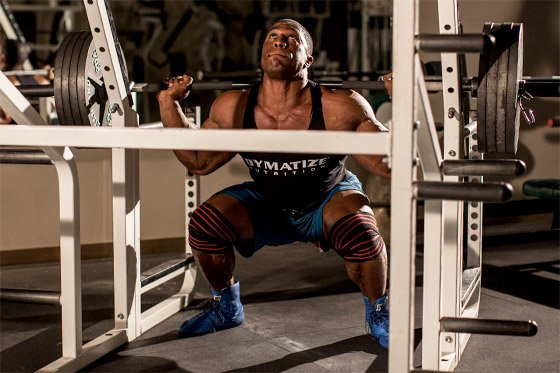
Advanced mistake 3
Ignoring the power of your mind
Listening to your body becomes more important the more advanced you become. Rather than worrying about reps and sets all the time, focus instead on feeling the muscle work and generating a pump.
With a more free-form approach to training, you quickly discover new ways to challenge yourself. Do exercises you hate or usually avoid or try high-intensity methods you never used before—like rest-pause, negatives, or cycling heavy and light workouts. If you're still searching for new ideas, spend some time on Bodybuilding.com and BodySpace for techniques and tips from experts who have faced the same challenges as you.
Advanced mistake 2
Not taking precautions for pain
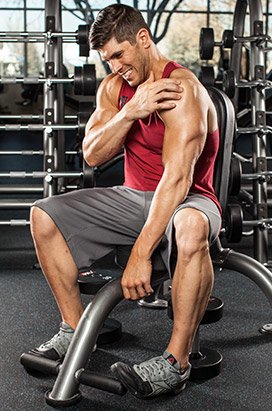
Along with being able to lift heavier weights, advanced bodybuilders also know about sore joints and mysterious aches. The repetitive nature of bodybuilding makes such nuisances a matter of everyday life. The longer and heavier you train, the more common these occurrences become. That means that all the things you skipped as a beginner, including warming up, doing rotator-cuff exercises, foam rolling, and even stretching, become even more critical if you want to lift relatively pain-free for years to come.
In addition, the advanced bodybuilder must know the difference between "good" and "bad" pain, when to pull back, and when to push through. Tendinitis and other joint aches related to repetitive motion are common, and they can get much worse if not treated properly. Ignore them, and you run the risk of setting your training back a month or two to rest an injury.
While the use of acetaminophen and other NSAIDs can help relieve symptoms, they don't address the underlying cause and shouldn't be taken long-term. Listen carefully to your body and see a sports medicine physician or chiropractor when you're hurting. Joint supplements can also help, providing the raw materials your body needs to repair damaged tissue and restore normal function.
Advanced mistake 3
Going it alone
It's entirely possible to become an advanced lifter while training entirely on your own. As many veterans can attest, a lazy, undependable, or inattentive partner can actually hold your progress back. But once you become well-versed in strength training, a responsive and motivating lifting partner can push you well past your previous limits and help you make gains you otherwise wouldn't achieve. The precise mechanism might be a mystery, but research confirms that in the presence of another person, weightlifters have the ability to push more weight or do more reps than likely alone.
Having a partner is priceless on your heaviest sets when you need a watchful eye to spot your free-bar squats, incline and decline barbell presses, or overhead shoulder presses, and especially when you attempt advanced-training techniques such as forced reps, rest-pause, dropsets, and negatives. Your toolbox of exercises and advanced training techniques increases exponentially with a solid training partner.
The only caveat: You need to return the favor to your partner as well. That way, everybody—and everybody's body—comes out ahead.

